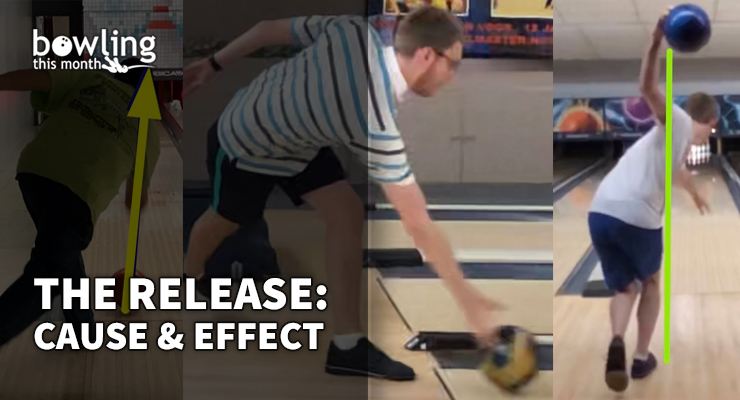Article Contents
- 1. What creates revs?
- 2. Evaluation points of release cause and effect
- 2.1. Long elbow extension
- 2.2. Forearm direction in the release to follow through
- 2.3. Upper body position at release
- 2.4. Upper body position at top of swing
- 2.5. Downswing
- 3. Release evaluation checklists
- 4. Drills to improve your release
- 4.1. Release drill
- 4.2. At-home release drill
- 5. Acknowledgements
Note: This article is only available to Bowling This Month subscribers.
One of the most common questions we get at Bowling This Month is, “How can I improve my release?” As I will discuss in this article, there are many cause and effect components to the elite-level release. With more insight into these components, you can take your game to a higher level.
Many bowlers seek out a simple solution and see the release as merely a function of hand and wrist movement, but there is so much more to an effective bowling release. I encourage you to start thinking of the release as multi-dimensional, with cause and effect connections with the elbow, upper body, swing, and more.
In this article, I’ll present several focus points that all bowlers can incorporate into their games, as well as some more advanced release variables that will take time to incorporate but will pay off with a significant improvement in rev rate over time. Some of these may even surprise you…
What creates revs?
In short, the release is a gear-like mechanism where the fingers function as one gear interacting with another gear, the finger holes of the bowling ball. Rev rate is the result of the arc distance the fingers travel while still in the ball over a specific amount of time. Those whose fingers travel a farther arc distance in the same amount of time will have a higher rev rate. Accordingly, two of the major contributing factors to creating a high rev rate are:
- how low your fingers are on the ball relative to the bottom of the ball, and
- how long the fingers remain in the ball through the release and into the follow through.
These factors can be seen most obviously in the emergence of two-handed bowlers, as their bent elbow paired with a relaxed flexed wrist maintains the finger position under the ball, increasing the arc distance traveled by the fingers in the ball throughout the release. Two-handers have a higher rev rate compared to most other bowlers because they are able to maintain their fingers under the ball into the release and then cause their fingers to travel a longer arc distance during the release. In short, the gear-like interaction between fingers and bowling ball is significantly longer for two-handers.
Most one-handers who have a high rev rate also bend the elbow in the downswing, which helps lower the finger position relative to the bottom of the ball and increase the release arc distance of the fingers. This is paired with a long elbow extension in the release to follow through, which keeps the fingers in the ...
Already a premium member? Click here to log in.


 (Only
(Only 